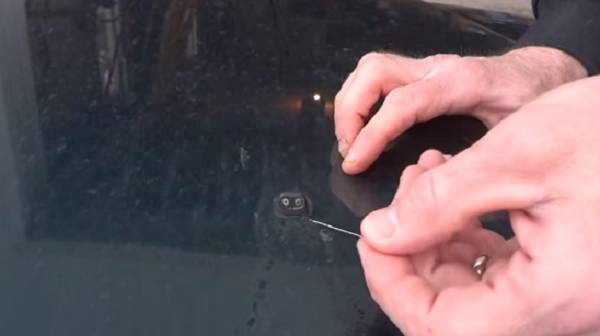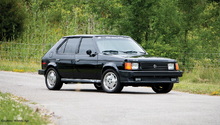Dodge Ram: How to Unclog Windshield Sprayer
There are a number of reasons as to why your windshield washer's nozzle can become clogged. Scenarios can range from a piece of dirt getting in the way of the sprayer, to calcified deposit caking up the nozzle opening. Here's how to unclog the nozzle.
This article applies to the Dodge Ram (1994-Present).
You never know when you will need to spray your windshield, but when you need to spray it, you'll want it to do the job properly. A clogged windshield washer nozzle is one of those things we’ve all had to deal with at one point or another. Unfortunately, the majority of us can attest to it coming to our attention only when we need it the most. If you notice your nozzle is malfunctioning in even the slightest way, follow these simple steps to fix it before it becomes less of an annoyance, and more of a hazard.


Materials Needed
- Small pin
- Pliers
- Can of compressed air
- Bowl of vinegar
- New windshield washer fluid nozzle (as necessary)
Step 1 – Make sure washer fluid reservoir is filled
This is an easy thing to forget to monitor - a malfunctioning / drippy nozzle might be simply the result of your car being low on fluid. Top off the reservoir to the max line.

Step 2 – Clean debris out of nozzle
You can use a small pin, paper clip, or piece of wire for this step; basically, anything that matches the diameter of the nozzle spray hole. Insert and scrape around the area to see if you can knock loose any piece of caught-up debris, dirt, or gunk. When you’re satisfied that you’ve scraped the hole as clean as possible, give the nozzle a quick test by spraying the windshield.

If this does not work, proceed to Step 3.
Step 3 – Remove nozzle and clean
Lift your engine hood and locate the windshield washer spray nozzle on the underside. You’ll note there is a hose leading to these two spots. This needs to be disconnected, and you can do this by simply sliding the hood off of the nozzle connector. If the hose is a bit stuck, use a pair of pliers to pull it off.
Next, using a pair of pliers, squeeze the bottom of the nozzle gently; don’t squeeze too hard as you don’t want to accidentally break or otherwise crack the nozzle. Squeeze and push the locking mechanism that keeps the nozzle in place inward. As you squeeze, push the nozzle up until the locking mechanisms have reached the other side of the hood. Close the hood and remove the nozzle.
Now take the nozzle and place it in a bowl of vinegar. Swish it around a bit and give it a quick scrubbing with your finger. If you want, you can repeat Step 1 at this point with the vinegar to see if there’s anything caked there in there. It might be a bit easier to remove the gunk now that the nozzle is no longer on the hood.
Leave the nozzle in the bowl of vinegar for 3-4 hours. When you're done, spray both ends using a can of compressed air. Finally, replace it on the hood of your truck.

Step 4 – Replace nozzle
To replace the nozzle, push the bottom part through the nozzle hole in the hood and ensure it is secure. Now, lift up the hood and replace the windshield washer fluid hose. Once you’ve ensured that the fluid hose is secure, close the hood and give the nozzle a test. This should have done the trick.

However, If this does not work, you may need to replace the nozzle. With a new nozzle, come back to this article and proceed with Step 3 and Step 4.
Featured Video: How to Unclog Windshield Sprayer
Related Discussions
- Windshield Washer Not Spraying - Dodgeforum.com
- Windshield Washer Spray Nozzle - Dodgeforum.com
- Windshield Washer Jets are not Spraying Well - Dodgeforum.com






